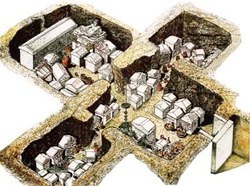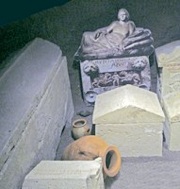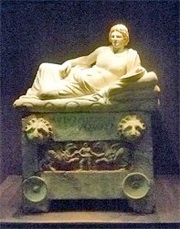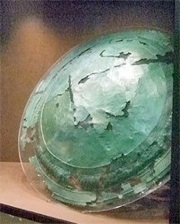
Image courtesy of the
Sopritendenza per i Beni Archeologici dell' Umbria
This cross-shaped four-roomed hypogeum is one of very few Etruscan burial sites to have been scientifically excavated in its undisturbed state. It was found in 1983 at Monteluce, in a garden in Via Guido Pompili (see Walk VI), when a gardener penetrated the vault of the vestibule. The travertine slab at the entrance remained in place and animal bones and pottery found just inside represented the remains of funeral feasts. The hypogeum was faithfully reconstructed here in 2000.


Some fifty travertine cinerary urns were laid out in chronological sequence around these urns and then in the adjoining rooms. They are all inscribed and each belonged to a male member of the Cai Cutu family. Some 30 female members of the family are named in the inscriptions as the mothers of the deceased.
The pre-fix "Cai" suggests that the founder of the hypogeum was a freed slave. Later generations of the family dropped it and used only the name "Cutu". In the most recent urns (in the vestibule), the inscriptions are in Latin and the family name is now Cutius. One of them (EDR 148142) commemorates Aulus Cutius, the son of Aulus and Hastia Pisentia, of the Tromentina tribe: this inscription thus post-dates the concession of Roman citizenship to the Perusians in 89 BC.

Return to the main page on the Museo Archeologico.



